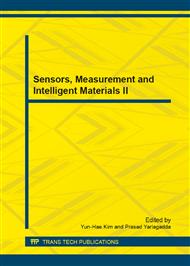[1]
Y.P. Yao, P.Q. Li: The Reliability and Redundancy Technology, Aviation Industry Press, Beijing (1991).
Google Scholar
[2]
Z.X. Wang: Reliability Analysis for Integrated Navigation Systems. Journal of Nanjing University of Aeronautics & Astronautics 27(2), 206-214(1995).
Google Scholar
[3]
Y.P. Yao, M.H. Cheng: The Application on Dynamic Fault Tree Analysis for Dissimilar Fault-tolerant Flight Control System. In: 18th Digital Avionics Systems Conference, IEEE (1999).
DOI: 10.1109/dasc.1999.863707
Google Scholar
[4]
X. Xiong, P. Zhang: Reliability Analysis of Flight Control System for Large Civil Aircraft with Imperfect Fault Coverage Model. In: IEEE Conference on Prognostics and System Health Management (PHM), IEEE (2012).
DOI: 10.1109/phm.2012.6228935
Google Scholar
[5]
S.W. Wang, H.Y. Zhang: A Simplification of Reliability Evaluation for Fault Tolerant Navigation System. Systems Engineering and Electronics 22(10), 82-85(2000).
Google Scholar
[6]
X.Z. Sun, W.Q. Li, Z.J. Chen: Hierarchical Hybrid Reliability Modeling Method for Flight Control Computer System. Journal of Shanghai Jiaotong University 45(2), 277-283(2011).
Google Scholar
[7]
X.D. Qin, Z.J. Chen: Reliability Analysis of Dissimilar Redundant Flight Control Computers Based on Petri Nets. Control and Decision 20(10), 1173-1176(2005).
Google Scholar
[8]
C.R. McClary, J.R. Walborn: Fault-tolerant Air Data Inertial Reference System Development Results. In: Position Location and Navigation Symposium. IEEE (1994).
DOI: 10.1109/plans.1994.303292
Google Scholar
[9]
M.D.W. McIntyre, C.A. Gossett: The Boeing 777 Fault Tolerant Air Data and Inertial Reference System-A New Venture in Working Together. In: 14th DASC Digital Avionics Systems Conference, IEEE, (1995).
DOI: 10.1109/dasc.1995.482827
Google Scholar
[10]
J. She, M.G. Pecht: Reliability of a k-out-of-n Warm-standby System. IEEE Transactions on Reliability, 41(1), 72-75(1992).
DOI: 10.1109/24.126674
Google Scholar
[11]
G. Merle, J.M. Roussel, J.J. Lesage, et al: Analytical Calculation of Failure Probabilities in Dynamic Fault Trees Including Spare Gates. In: European Safety and Reliability Conference, (2010).
Google Scholar
[12]
A. Myers, A. Rauzy: Efficient Reliability Assessment of Redundant Systems Subject to Imperfect Fault Coverage Using Binary Decision Diagrams. IEEE Transactions on Reliability 57(2), 336-348(2008).
DOI: 10.1109/tr.2008.916884
Google Scholar
[13]
E. Gai, J.V. Harrison, K.C. Daly: FDI Performance of Two Redundant Sensor Configurations. IEEE Transactions on Aerospace and Electronic Systems 15(3), 405-413(1979).
DOI: 10.1109/taes.1979.308835
Google Scholar


